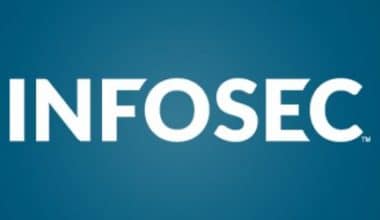A well-executed IT helpdesk ticketing system streamlines communication. It accomplishes this by removing bottlenecks that occur when no one has a clear picture of the problem, its priority, and the person reporting it. However, even the best software is useless without the right people and processes. In this article, we will walk you through the best IT helpdesk ticketing system to go for, some reviews on them, the basics of an open-source helpdesk ticketing system, and free tips that will guide you through the journey of choosing and managing one. Let’s get into detail.
What is a Helpdesk Ticketing System?
A ticketing system is a piece of software that allows a customer service team to create, manage, and maintain a list (or lists) of customer problems. As your company and customer base grow, having a help desk ticketing system becomes increasingly important for the success of your customer support operation. Without one, your team will struggle to respond to customer queries, requests, and incident reports that continue to pile up across multiple channels.
Why does your Business need a Helpdesk Ticketing System?
Helpdesk ticketing is required by your company to help organize, prioritize, and consolidate support requests. Ticketing systems allow organizations to quickly assign inquiries to the most appropriate agent, provide context for customer interactions, and track customer inquiries. The system also includes a shared inbox to assist support staff in coordinating their efforts.
Helpdesk Ticketing System Best Practices
Try these best practices while using your helpdesk ticketing software for a more enjoyable experience.
#1. Have a support portal
Encourage self-service by making a large amount of content available in your external knowledge base. Make it simple to submit a ticket and include a smart search function that allows customers to find all information relevant to their case.
#2. Categorize tickets on submission
Create automation rules that assign a specific type of issue to a specific agent or department to save time and reduce manual work.
#3. Define SLAs and stick to them
Service Level Agreements (SLAs) allow you to set expectations with users and track agent performance. To meet your SLAs, ensure that you have enough agents to handle all support requests and that your IT helpdesk software can support your team.
#4. Let your system manage handoffs
Customers expect businesses to “know their contact information, product and service information, or history.” Ensure that agents have all of the background information they need to resolve tickets.
#5. Create specialized teams
Instead of having all of your IT staff handling everything from network infrastructure to hardware support to system change requests, you can form specialized teams to handle groups of related tasks. This reduces stress and allows your agents to concentrate.
#6. Perform customer satisfaction surveys regularly
Metrics provide a wealth of information, but it is customer feedback that allows you to see the finer details in the big picture.
The Best IT Helpdesk Ticketing Systems in 2023
There are numerous IT help desk solutions on the market today, each with its own set of selling points and price points. To assist you in making an informed decision, we’ve listed the best help desk software solutions available for businesses of all sizes in this article:
#1. Zendesk
Zendesk is the most well-known customer support software on the market today. Among its features are integrated surveys to measure customer satisfaction and analytics dashboards to track the performance of your team. According to customer reviews, this helpdesk ticketing system is a cloud-based customer support solution that allows you to receive, prioritize, and handle customer support requests from various channels such as email, chat, and social media, all in one centralized and shared location.
Triggers allow you to automatically assign and escalate tickets to specific groups, send automated responses and follow-ups, notify customers and agents of specific updates, and tag specific tickets for easy reporting and information retrieval. Zendesk also includes integrated surveys to measure customer satisfaction and analytics dashboards to track your team’s performance.
#2. Freshdesk
Freshdesk is a scalable solution for any size of business. It has a number of useful features, including one for gamification, which encourages agents to improve their output. According to the reviews for this helpdesk ticketing system, it is a highly scalable, cloud-based help desk system for businesses of all sizes. It has a shared inbox where all customer support tickets from various channels are consolidated, customizable workflows, automated pop-ups to help deflect common customer queries, and comprehensive dashboards to monitor quality metrics.
Freshdesk also includes a team huddle feature for bringing in experts to resolve complex tickets, as well as a gamification feature to motivate agents and improve their performance.
#3. Zoho Desk
Zoho Desk is an excellent choice for smaller, customer-facing support teams that require a platform that can scale with them. However, Zoho’s CRM is suitable for businesses of all sizes and across all industries. Many Zoho users find this helpdesk ticketing system especially useful because it integrates easily with other Zoho products, according to multiple reviews. If you’re already familiar with Zoho products, implementing and using Zoho Desk will be second nature.
Furthermore, if you use Zoho CRM, you can easily sync your database with Zoho Desk. Remember that Zoho is constantly adding new features, such as social media integration and data analysis, so keep an eye on how this product evolves.
#4. HappyFox
HappyFox is a cloud-based CRM that offers ticketing solutions for a wide range of industries and business sizes. Customers of HappyFox include a wide range of organizations, from small businesses to large corporations. Based on reviews, their helpdesk ticketing system offers a plethora of simple-to-use yet powerful features.
#5. Help Scout
Help Scout’s helpdesk ticketing system is as feature-rich as HappyFox’s. This helpdesk ticketing system, Help Scout, like HappyFox, can support large teams with more than 500 users. Their clientele includes a diverse range of modern businesses from the technology and recruiting industries. Even small teams in need of powerful, flexible ticket management tools may find it a good fit.
Help Scout offers robust reporting and built-in knowledge bases in addition to its ticketing system.
#6. Freshservice
Freshservice, like most Freshworks Inc. products, is a robust, comprehensive, and user-friendly product with a very intuitive interface. According to the reviews on this deskhelp ticketing system, it is a cloud-based IT service management (ITSM) solution with a modern and user-friendly interface.
Freshservice, designed specifically for enterprises, is ideal for businesses looking for an ITIL-compliant solution with features for change management, incident management, release management, and much more.
#7. HubSpot Service Hub
Through its Service Hub product, HubSpot offers a reasonably robust ticketing system. Service Hub, in addition to providing comprehensive helpdesk functionality, assists support agents in prioritizing tickets, automating workflows, and providing personalized experiences across multiple service channels. Because HubSpot offers a wide range of custom-tailored packages, businesses of all sizes in virtually any industry can find a package that meets their requirements.
#8. Front
Front connects your entire customer service team via a shared email inbox. It is used by innovative companies such as startup incubators, e-commerce companies, and other SaaS businesses to manage their customers’ experiences. But, beyond that basic functionality, Front is truly designed to foster a culture of collaboration on your service team.
#9. LiveAgent
LiveAgent is a customer service solution with a simple and easy-to-use interface. It has a unified inbox where all customer support tickets from various channels are collected, assigned, and prioritized according to your predefined workflows. Based on popular reviews, the users of this helpdesk ticketing system indicate that its native live chat is easily accessible through a widget that seamlessly integrates with your websites and apps, allowing you to connect with customers instantly.
In addition, LiveAgent provides a knowledge base that allows customers to self-serve, a built-in call center with IVR and unlimited call recording storage, and over 40 third-party integrations with popular solutions.
#10. Vision Helpdesk
Vision Helpdesk is a low-cost ticketing solution that can benefit businesses of all sizes. It gathers customer inquiries and incident reports from various sources and consolidates them – in the form of tickets – into a shared inbox where your support agents can respond to and resolve them. Task management, gamification, workflow automation, SLA and escalation rules, knowledge base creation, community forums, and surveys are all features of Vision Helpdesk. It also includes the Blabby collaboration tool, which allows agents to communicate, share knowledge, files, and presentations, and work together on ticket issues.
Best Open-Source Helpdesk Ticketing System
An open-source helpdesk ticketing system provides a compelling alternative to SaaS platforms for businesses that prefer a more flexible and customizable solution, offering greater control over the software and the ability to tailor it to specific business needs without incurring licensing fees. Let’s look at a few of them below:
#1. osTicket
osTicket is one of the best open-source helpdesk ticketing system that provides all of the basic functionality required for IT support and can be customized to your liking. You can choose between a free open-source version and a monthly subscription-based cloud-hosted version. The ability to auto-triage incoming requests is one of osTicket’s main advantages.
#2. Zammad
Zammad is the next open-source helpdesk ticketing system software on our list. This web-based open-source helpdesk support system allows you to provide IT support via a variety of channels, including phone, Facebook, Twitter, chat, and email. Zammad’s ticket escalation rules and “desired deadlines” can be applied to clients and organizations as well as tickets, allowing you to quickly define and monitor your SLAs.
#3. Request Tracker
Request Tracker is a free, open-source help desk ticketing program that allows you to manage workflow processes and keep track of tickets. Because the web-based interface is completely responsive, user requests can be accessed from any device.
#4. OTRS
OTRS is a highly adaptable open-source ticketing system that enables businesses to manage customer support requests through a centralized platform. Businesses can easily customize OTRS to meet their specific requirements, whether it’s configuring workflows, creating custom fields, or configuring notifications.
Common Mistakes Made When Buying A Help Desk Ticketing System
It is very easy to make mistakes when selecting a help desk solution if you do not thoroughly research what is available on the market and carefully consider your company’s needs and budget. Here are some of the most common business mistakes:
#1. Spending money on features you don’t need
The term “premium” does not always imply “better.” Many small and medium-sized businesses choose a premium, enterprise-grade plan because of all the feature additions it typically includes, but only half of the features are used. We recommend that you invest selectively and wisely at all times.
#2. Failure to account for future events
Within a few months, your company could experience exponential growth. It may also face financial difficulties, forcing you to scale back your operations. No matter what the future holds for your business, you’ll definitely need your help desk plan to grow or shrink accordingly. Purchasing a non-scalable help-desk solution can be a costly mistake in the long run.
#3. Purchasing an all-in-one suite when you only require one or two specific solutions
This one is self-explanatory; if you only need a ticketing solution, go with a provider that offers just that, or buy a ticketing solution from an all-in-one suite vendor selectively; never buy the entire suite.
What is an example of Helpdesk System?
Help desks typically include a ticketing system, an inbox, a routing or assignment system for reps, and a reporting dashboard.
What is the Difference between Helpdesk and Ticketing System?
Ticketing systems allow for the creation and management of tickets that outline specific support requests. Help desk software provides a more comprehensive platform with knowledge bases, live chat features, and an integrated ticketing system.
What is an example of a Ticketing System?
We have listed a few examples of helpdesk ticketing systems in this article, including Freshdesk, Hubspot, LiveAgent, Front, and a number of others.
What Tools are Used at Helpdesk?
Top Helpdesk Tools
- SolarWinds Service Desk.
- SolarWinds Web Help Desk.
- Atera.
- Zoho Desk.
- Spiceworks Help Desk.
- Freshdesk.
- AnswerDash.
- ManageEngine ServiceDesk Plus.
Is Helpdesk a CRM System?
The Helpdesk is not technically a CRM. The helpdesk focuses on resolving customer issues, whereas CRM focuses on increasing sales using the data provided.
Is a Ticketing System a CRM?
A CRM ticketing system is a help desk ticketing tool that includes a CRM integration to provide more context to customers. It operates by establishing two-way communication between a CRM and a help desk. A CRM-based help desk system adds ticket information to leads in CRM and incorporates customer context into support tickets.
How do I create a Ticket Helpdesk?
If your customer contacts you through a channel other than email (e.g., phone), you can create a ticket to continue the conversation via email. To create a ticket, go to the Tickets section of the Ticket dashboard and click the “+ New ticket” button.
What are the Benefits of a Helpdesk Ticketing System?
The top seven advantages of a help desk ticketing system
- Create the right structure.
- Queue and assign requests.
- Conduct end-user surveys.
- Empower end users with self-service.
- Better manage routine tasks.
- Generate reports with targeted key performance indicators.
- Increase collaboration and communication.
Conclusion
Help desk software and IT tools can help your customer service and support teams be more efficient and effective in resolving customer issues, collaborating with one another, and providing a delightful experience. Your customers are more likely to become royal promoters of your brand as a result of your exceptional customer service and support.
- TICKETING SYSTEM: 17+ Best Ticketing Systems in the UK (+ Free Options)
- IT TICKETING SYSTEM: Meaning, Best Software, and Open Source
- TICKET MANAGEMENT SYSTEMS: Best Free and Paid Options In 2023
- WHAT IS A HELP DESK? Examples and Software Solution
- WORK TICKET: Meaning, Template & How it Works
- VoIP NUMBER: Meaning, Apps, How to Find & Call it






